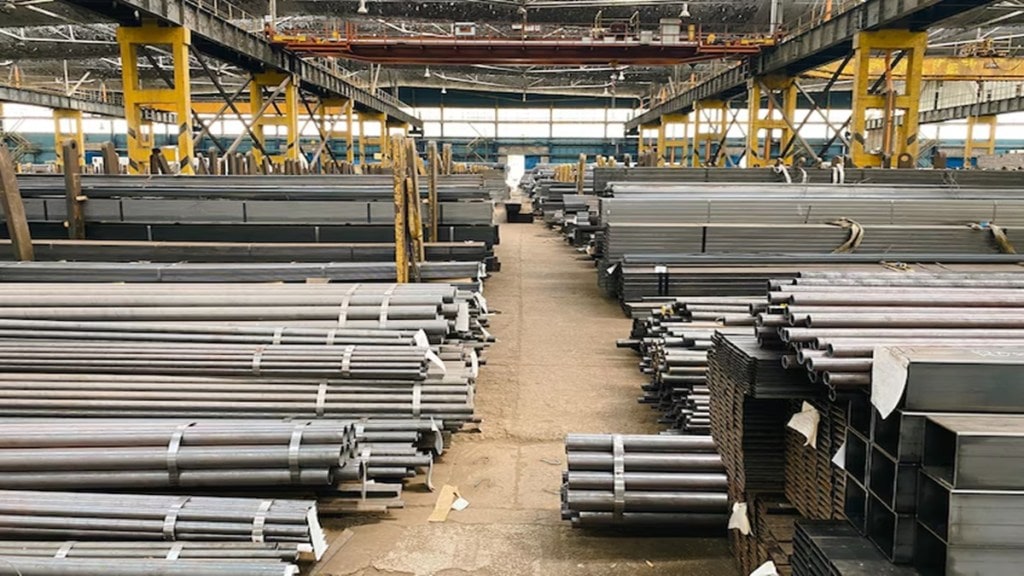With US President Donald Trump’s latest announcement to substantially raise tariffs on steel and aluminum imports, cancelling exemptions and duty-free quotas for major suppliers like Canada, Brazil, the European Union (EU), Mexico, South Korea, Japan, Argentina, Australia, and Ukraine, ICRA said, the domestic steel industry is facing fresh challenges while also eyeing opportunities. On February 11, 2025, the US withdrew all country-specific duty exemptions on steel imports given under Section 232 of the Trade and Expansion Act of 1962, with effect from March 12, 2025. Per this, all preferential market access given in the form of tariff waivers or tariff exemption volume quotas to these countries will be removed.
The exemptions had enabled these select countries to garner around 75-80 per cent of the US steel import basket in recent years. However, effective March 12, 2025, all steel imports by the US will be treated on an equal footing, as the 25 per cent tariff levied on steel (under Section 232) becomes uniformly applicable to all countries.
Girishkumar Kadam, Senior Vice-President & Group Head, Corporate Sector Ratings, ICRA, said, “The US typically imports 28-30 million tonnes of steel annually, of which 77-82 per cent is in the form of finished steel items, and the balance in the form of semis. The latest tariff measure will be impacting around 6-7 per cent of global steel trade flows, as over the coming months, they adjust to the shifting market dynamics. With around a quarter of USA’s finished steel demand being met through imports, which implies a large domestic deficit, the process of import substitution can only happen gradually over several years, in our view.” Therefore, he added, the US will continue to import steel in the foreseeable future, and in the near term, these restrictive measures are likely to have a material upward pressure on its domestic steel prices.
Per assessment by ICRA, these trade measures cut both ways for the domestic steel industry. First, ICRA stated, deliveries of around 4 mtpa to the US from Asian suppliers like Japan and South Korea, which till now had preferential market access, could be partly bounced-off to high-growth markets like India. It is worth noting that these two countries rank among the top three steel exporters to India, accounting for approximately 40-55 per cent of India’s overall finished and semis steel imports.
Given the duty-free access on account of the free trade agreements (FTA) with India, import pressures from South Korea and Japan could increase in FY2026 as they search for alternate markets for their hitherto American cargoes. This can exert pressure on domestic steel prices, which may pull down the industry’s earnings further in FY2026. Meanwhile, China, unlike South Korea and Japan, has a limited presence in the US as its steel exports are already exposed to the 25 per cent tariff. Therefore, redirection of trade flows from China remains less of a threat after the US tariff announcement.
Girishkumar Kadam said, “While higher imports from Japan and South Korea remain a key downside risk, we believe that there are possible upsides as well for the domestic industry. The ending of the USA’s preferential market access regime and bringing in a level playing field can potentially lead to displacement of high-cost suppliers like Canada, Brazil, EU, and Mexico, with low-cost suppliers, especially from Asia. As per our estimates, around 19 mtpa of steel cargoes enter the USA from these high-cost countries. This opens the possibility for Indian mills to nibble at a part of this large opportunity and increase their export footprint in the USA, which, as of now, accounted for a miniscule 2-3 per cent of India’s overall steel export basket.”
According to ICRA, the most brutal impact of the latest announcement will be felt in the steel markets of the NAFTA countries of Canada/Mexico, and the South America nation of Brazil. “For Canada, ~55-60 per cent, and for Mexico, ~25-30 per cent of the country’s annual steel production was being exported to the US. Similarly, for Brazil, ~10-15 per cent of the country’s annual steel production was being exported to the USA,” ICRA informed.
Further, with their freight cost disadvantage for access to alternate large markets in Asia/Europe, and cost inferiority over Asian suppliers, the steel industry in these three countries appears poised to enter a sustained period of deep downturn unless the Governments can engineer a middle ground on trade relations with the US in the coming months, ICRA said.

